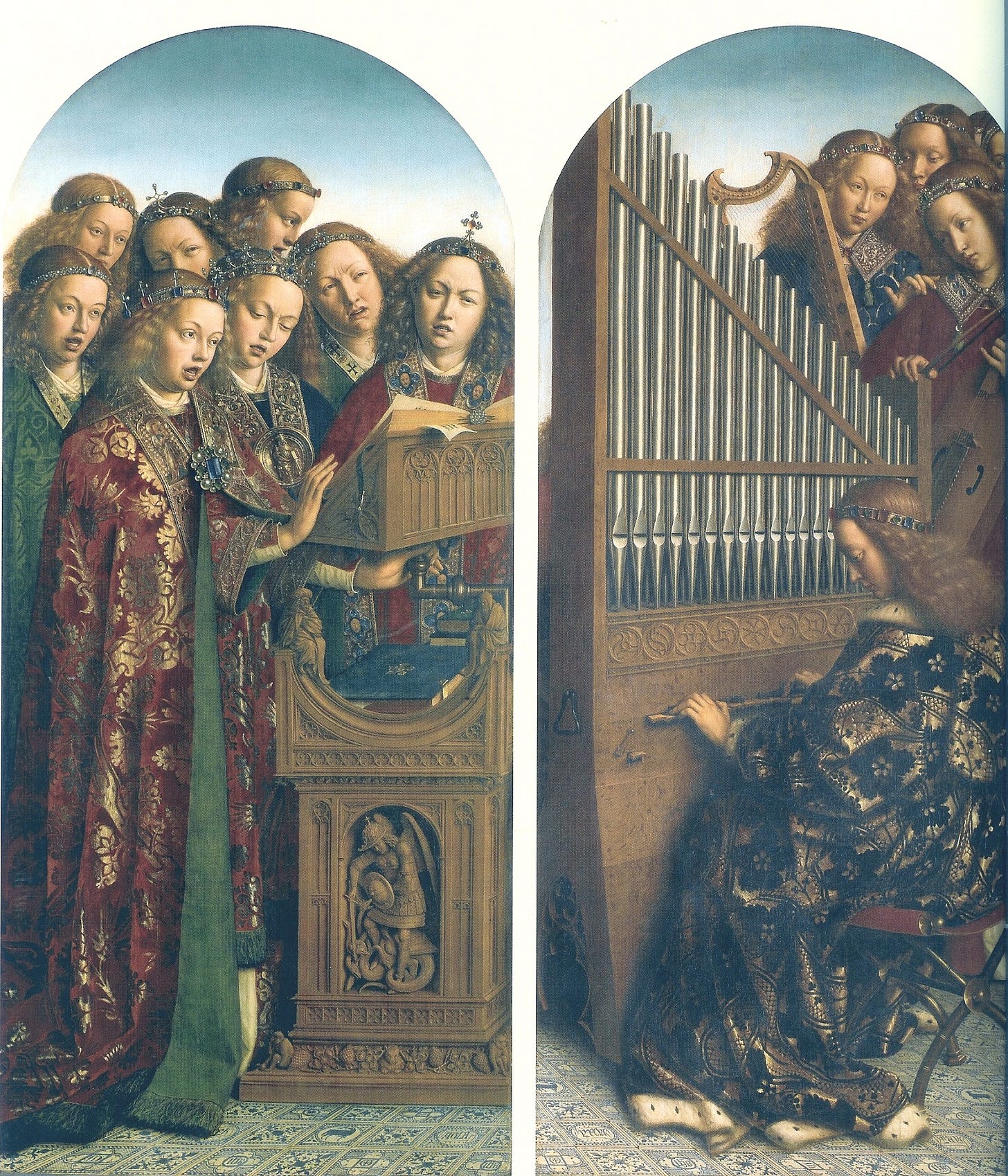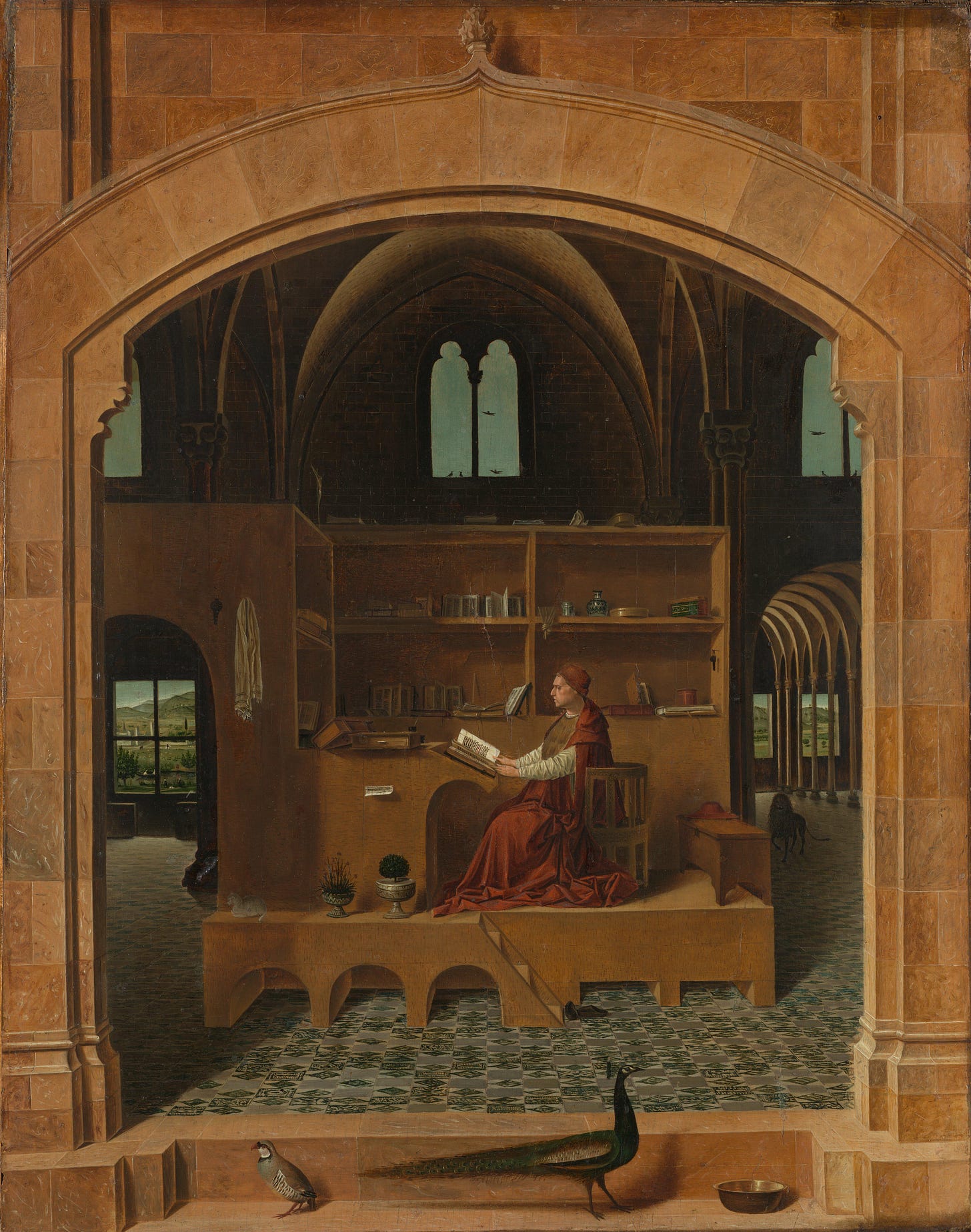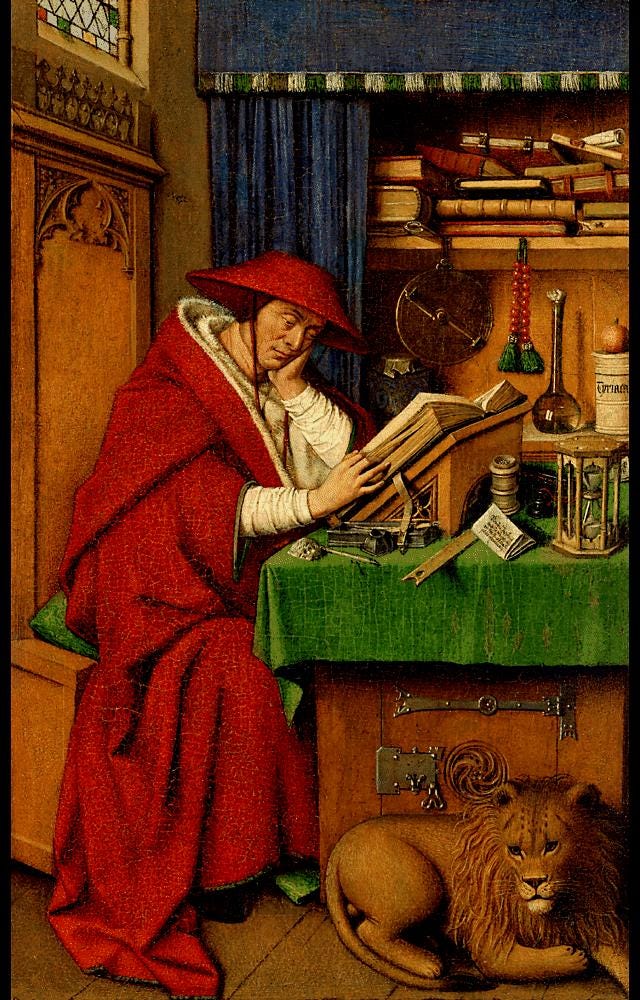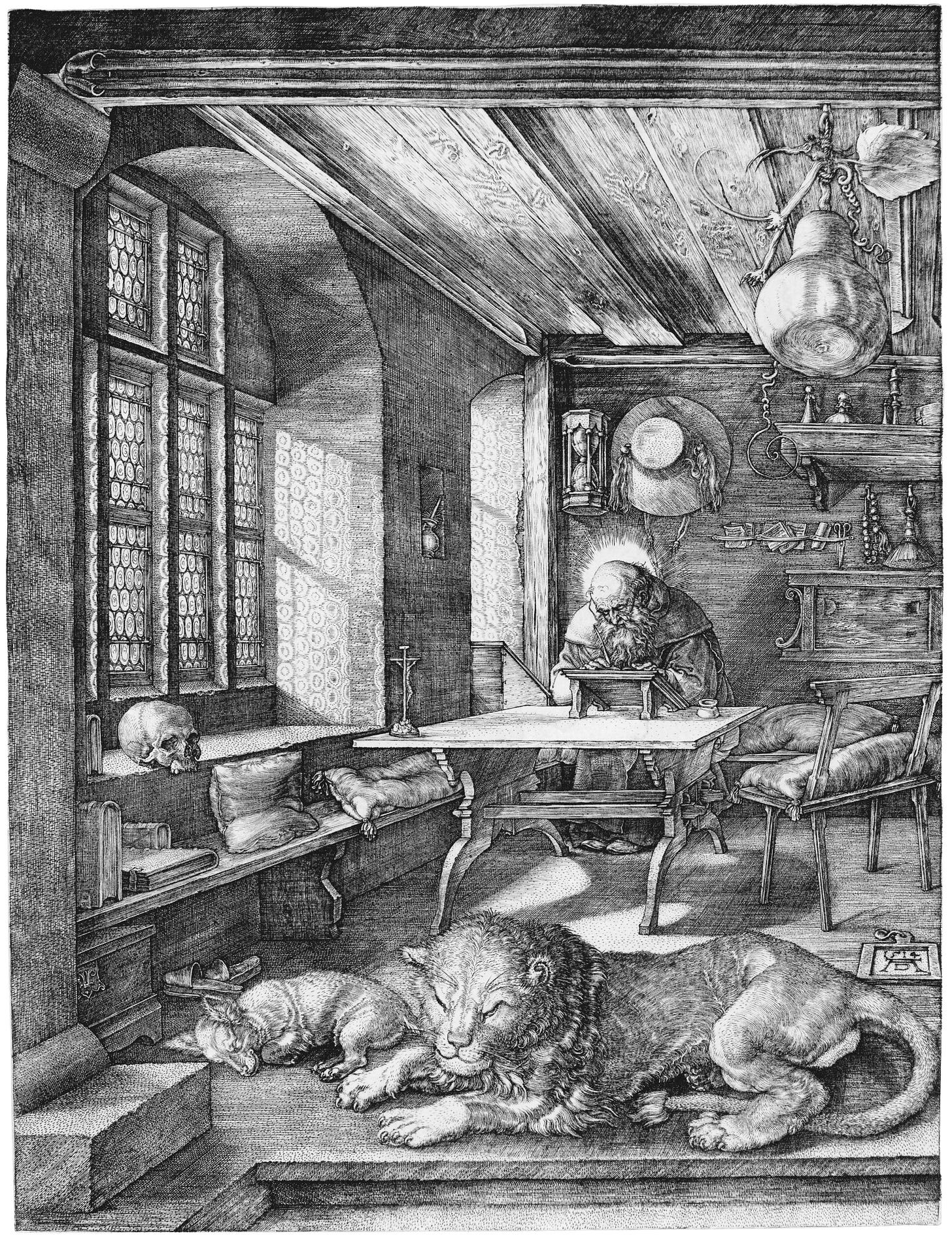Saint Jerome in His Study - Antonello da Messina
About an ancient studious figure and the new stunning lines of perspective.
Saint Jerome, Patron Saint of Scholars
Before looking at the painting in detail, it is important to understand who Saint Jerome was. Many paintings are passed by without a proper understanding of their iconography - there are so many saints and we have so little time! - whereas it often provides an essential layer for interpreting historical works. Renaissance art was still heavily influenced by religion, despite the many technical advancements it provided.
Saint Jerome is one of the most significant figures in Christianity. Born around 347 A.D. in what would be modern Slovenia or Croatia, Jerome of Stridon studied several languages (Latin, Greek, Hebrew) before fully embracing Christianity.
From 382 to 384, his extensive knowledge of the Bible and languages made him indispensable to Pope Damasus I. He was given the duty to take a revision of the Gospels of the Vetus Latina, the Bible version then in use, based on Greek manuscripts.
He left Rome in 384, shortly after the death of Pope Damasus I. Jerome moved to Jerusalem and traveled across the region in order to perfect his knowledge while leading an ascetic life.
Jerome’s most notable work took place until 405: he translated again the Bible into Latin. This monumental task involved translating the texts not from Greek, as before, but from Hebrew and various other ancient sources to ensure greater accuracy.
This version of the Bible, known as the Vulgate, gradually eclipsed the former Vetus Latina version. It was the first book printed in Europe by Gutenberg and is still in use today. Despite some revisions, this version remains largely the work of the man now known as Saint Jerome.
He was, for all those works, a particularly appreciated figure during the Renaissance. His knowledge of Greek and Hebrew may have made him considered as the precursor of the new values of humanism.
Composition and Innovation
This painting made by Antonello da Messina (~1430 - 1479) is, through its meticulousness and innovative use of perspective, analogous to the works of Saint Jerome.
It portrays Saint Jerome in a study that resembles a lofty, cathedral-like space, reflecting his intellectual and spiritual stature. We recognize Saint Jerome through several traditional elements of his pictorial representation:
The purple cardinal's attire, which was attributed to him by tradition, as he was a personal advisor to Pope Damasus I, although the role of cardinal emerged only centuries after Jerome’s death;
The lion which has been, since the 13th century, a part of Saint Jerome’s legend: it is said that he extracted a thorn from a lion's paw, and the lion then became his devoted companion;
The numerous books and his posture of him reading emphasize the erudition of the Saint.
The scene is illuminated by two contrasting light sources: one from the entrance in front of the composition and one from the background, masked by the study cabinet of the Saint. He is thus bathed in a soft light, with the play of light and shadow placing him at the center of attention.
Antonello da Messina used tiles on the floor to reinforce the perspective through a grid pattern. The Saint, positioned where the perspective lines of the tiles converge and at the center of the canvas—which is also the middle of a set of planes and rectangles—becomes the true focal point of this masterpiece.
All the architectural complexity here serves as a magnificent frame for the real subject of the painting. Once this is observed, the viewer can linger on the various details scattered throughout the painting, which reinforce the glorification of the Saint’s work: the birds in the background symbolizing the ascent to Heaven, the human activity beyond the windows representing the ascetic life…
Dating and Provenance Issues
Antonello da Messina, born in Sicily as his name suggests, studied in Naples when it was a prolific center of artistic activity, including the influence of Flemish painters. Their influence is notable on ‘Saint Jerome in His Study’ especially for its detailed realism and use of perspective. The pavement is reminiscent of Van Eyck’s technique.

In the 16th century, Van Eyck and other Flemish painters were mistakenly believed to have created this piece. Unlike many of his other works, Antonello da Messina neither signed nor dated this painting, which led to confusion.
The painting was lost for centuries before it reappeared in 1835 in England, where it was believed to have been painted by Dürer. It was not until 1850 that Antonello da Messina was correctly identified as the author of this masterpiece.
Van Eyck and Dürer have also painted Saint Jerome at work, as it was a popular subject of the time. While the Saint’s characteristics are consistent, the space depicted in Messina’s painting is particularly innovative.
Saint Jerome in his study has often been depicted in closer compositions with almost claustrophobic spaces, perhaps to emphasize his ascetic life. Messina, however, chose to place the point of view outside the building, giving the scene a certain monumentality. This decision reinforces the impression of the Saint’s solitude and concentration, as well as the significance of the task he is performing - likely translating the Bible. A masterpiece still relevant today, just like this painting.








It's positively dizzying how many people painted Jerome in his study! I for one, am not a great fan of this one, even though I found your post a great read, and very informative. For me it looks like architectural hybridism on display--a study the man could easily fall from and break his neck! I like the ones like Dürer's that look like real studys where real studies are taking place. But I'm also intrigued by Matteo di Giovanni's Jerome: It's a colorful mess, but interesting because Jerome is looking at us, as if to say, 'Look what I've done.' That look goes against every other depiction of Jerome that I can think of, which all show Jerome so absorbed in his studies that he's not even aware of the 'painter.'
I've always loved the idea of extracting the thorn from the lion's paw. A lovely write up, Sebastian.